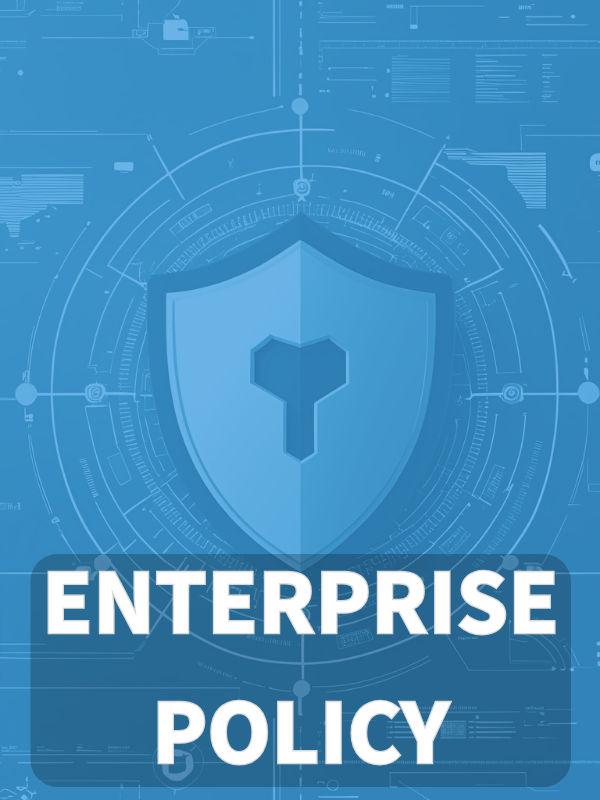Overview
The Incident Response Policy establishes the requirements, roles, and workflows for effective detection, reporting, containment, and remediation of information security incidents, aligning with ISO/IEC 27001, ISO/IEC 27002, NIST, GDPR, NIS2, and DORA.
Comprehensive Threat Response
Defines end-to-end processes for detection, containment, recovery, and post-incident improvement.
Clear Roles and Timelines
Assigns responsibilities and escalation paths for staff, security, legal, and executive teams.
Regulatory Notification Alignment
Meets GDPR, NIS2, DORA, and contractual reporting requirements with strict notification timelines.
Continuous Resilience Improvement
Mandates lessons learned, metrics tracking, and annual IR program reviews to boost cyber resilience.
Read Full Overview
Policy Diagram

Click diagram to view full size
What's Inside
Scope and Rules of Engagement
Incident Classification and Response Workflow
Reporting, Notification, and Escalation Protocols
Metrics and Continuous Improvement
Governance Requirements
Exception and Risk Treatment Management
Framework Compliance
🛡️ Supported Standards & Frameworks
This product is aligned with the following compliance frameworks, with detailed clause and control mappings.
| Framework | Covered Clauses / Controls |
|---|---|
| ISO/IEC 27001:2022 | |
| ISO/IEC 27002:2022 | |
| NIST SP 800-53 Rev.5 | |
| EU GDPR |
33(1)33(3)(a)33(3)(b)33(3)(c)33(3)(d)34(1)34(2)(a)34(2)(b)34(2)(c)
|
| EU NIS2 | |
| EU DORA | |
| COBIT 2019 |
Related Policies
Audit Compliance Monitoring Policy
Validates incident readiness and response effectiveness through structured audits and compliance assessments.
Information Security Policy
Establishes the overarching requirement for risk-based, incident-ready operations.
Change Management Policy
Ensures containment and recovery activities involving infrastructure or services follow formal procedures.
Data Classification And Labeling Policy
Supports incident severity classification based on data sensitivity.
Backup And Restore Policy
Enables recovery from ransomware or destructive attacks with integrity assurance.
Cryptographic Controls Policy
Defines encryption measures that reduce incident impact and data exposure risks.
Logging And Monitoring Policy
Provides the foundational event visibility, alerting, and log retention required for effective detection and forensics.
Test Data And Test Environment Policy
Ensures that incidents affecting non-production systems are also handled in a structured and secure manner.
About Clarysec Policies - Incident Response Policy
Effective security governance requires more than just words; it demands clarity, accountability, and a structure that scales with your organization. Generic templates often fail, creating ambiguity with long paragraphs and undefined roles. This policy is engineered to be the operational backbone of your security program. We assign responsibilities to the specific roles found in a modern enterprise, including the CISO, IT Security, and relevant committees, ensuring clear accountability. Every requirement is a uniquely numbered clause (e.g., 5.1.1, 5.1.2). This atomic structure makes the policy easy to implement, audit against specific controls, and safely customize without affecting document integrity, transforming it from a static document into a dynamic, actionable framework.
Centralized Security Incident System
Requires all incidents be logged, tracked, and analyzed in a purpose-built SIMS for accountability and improvement.
Tiered Incident Classification Model
Implements a multi-tier approach for severity, guiding tailored response and escalation for critical, high, and medium/low events.
Auditable Metrics-Driven Response
Mandates use and annual review of detection, containment, and recovery metrics for measurable program maturity.
Frequently Asked Questions
Built for Leaders, By Leaders
This policy was authored by a security leader with 25+ years of experience deploying and auditing ISMS frameworks for global enterprises. It's designed not just to be a document, but a defensible framework that stands up to auditor scrutiny.
